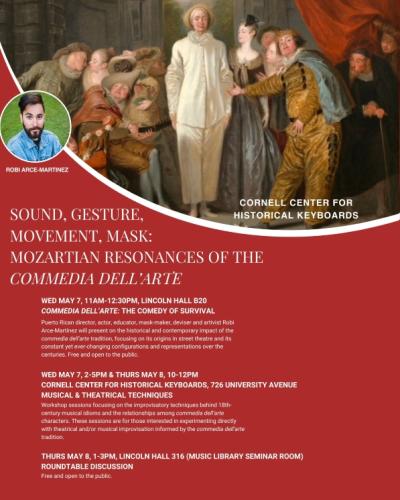
The Cornell Baroque Organ
The majestic baroque organ in Cornell’s Anabel Taylor Chapel required over seven years of research in an international, collaborative effort by Cornell's College of Arts and Sciences and the Gothenburg Organ Art Center (GOArt) at the University of GÖTEBORG, Sweden.
Interdisciplinary Effort
The instrument re-creates the tonal design of the celebrated Charlottenburg organ in Berlin, handmade in 1706 by master organ builder Arp Schnitger and tragically destroyed during WWII. The interdisciplinary effort to understand the many aspects of this historic organ’s construction included experts in fluid dynamics, electro-acoustics, and metallurgy, as well as craftsmen and musicians. Each of the nearly 2,000 pipes was handcrafted in Sweden under the direction of project designer Munetaka Yokota.
Exquisite Craftsmanship
The massive, intricately designed wooden case is based on another Schnitger organ in Germany. Every detail is handmade and historically accurate, from the wooden pegs and hand-forged nails to the hand-planed wooden surface and dovetail joints.
Musical Versatility
Commissioned by the Department of Music, the organ is perfect for the music of J.S. Bach and his north German predecessors, and is versatile enough for solo and ensemble music from the 16th century onward. As a complement to the music department’s strengths in performance and research, the organ serves as a resource for top organ students, professional performers, composers and scholars at Cornell.
Link to information about graduate programs.
Why Cornell?
“A great university deserves to have a really great organ,” says Annette Richards, university organist and project manager. Although Cornell had a number of organs already, it lacked an instrument of the style and scope appropriate to the music of the noted German organist composers of the 17th and 18th centuries. “There was no great vehicle for playing the music especially of Johann Sebastian Bach and his North German predecessors. So I felt it was important for us to get a new really first class—world class—instrument at Cornell,” says Richards.
“Cornell is an institution that fosters many kinds of scholarship, and it also has a long and very storied musical tradition,” continues Richards. “Andrew Dickson White was a big organ supporter and fan. He initiated getting an important organ for Bailey Hall when that building was built. “And Cornell's College of Arts and Sciences has a music department where the 18th century is a real strength. It also has a fine collection of keyboard instruments already, and it made sense to build on all those strengths and that history to bring something like this here.”




